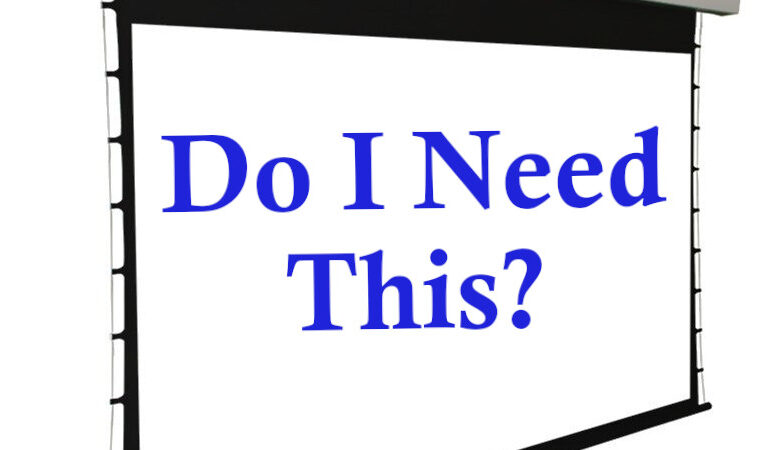Do I Really Need A Tensioned Projection Screen?
You’ve decided to take the big step and upgrade to a projection setup. For most people, that would be enough. But not for you! You want it all! The flat panel with all the HDR and gaming goodies as well as the projection screen for the maximum image size. The solution? A screen that rolls down in front of your TV for movies. The problem is that you’ve discovered that there are major differences between roll-down screens. The manual ones are the least expensive, followed by the non-tensioned powered screens, and tensioned screens. You don’t mind spending the money, but do you really need a tensioned projection screen? Let’s discuss!
What’s The Difference?
There are two main types of motorized projection screens on the market – tensioned and non-tensioned. A non-tensioned screen simply has a bar on the bottom to weigh it down. Much like this offering from Elite Screens:
You can see the bar across the bottom. A tab-tensioned screen will look like this (again from Elite Screens):
Here, you can see that not only is there a bar across the bottom, but a wire up the length of the side of the screen. Tabs attach the wire to the screen and hold it taut.
What Does Tensioning Do?
The main point of getting a tensioned projection screen is to keep the screen flat. If the image you are projecting has any sort of straight or parallel lines, a non-flat screen will show that immediately. Non-tensioned screens are more susceptible to moving with wind (especially from an AC or heating system), and will generally become more wavy over time.
Of course, the tension can loosen over time as well. That’s why most tab-tensioned screens have the option of adjusting the tension. This means that your perfectly flat screen will stay flat for the life of your screen.
Is Tensioning Worth It?
The question, of course, is cost. The two screens we listed both come in 100″ diagonal options. The non-tensioned, motorized screen costs (at the time of writing) $345. The tab-tensioned version (also motorized) runs over $1000 more at $1460! That’s a huge difference!
You may be thinking about your room and still unconvinced that you need a tensioned projection screen. If your screen is close to your wall and not near any vents, you may think you do not need to spend the premium on a tensioned screen. We’d warn against that. The whole point of getting a projection setup is for the massive screen. The larger your screen, the more susceptible to ripples it will be. Tab-tensioning may be expensive, but if you want a flat screen to project your picture upon, it is imperative.




